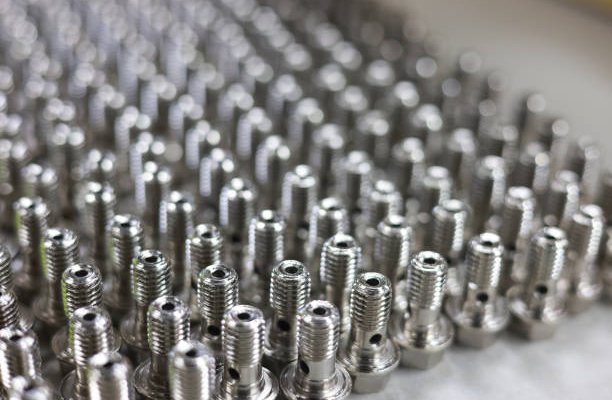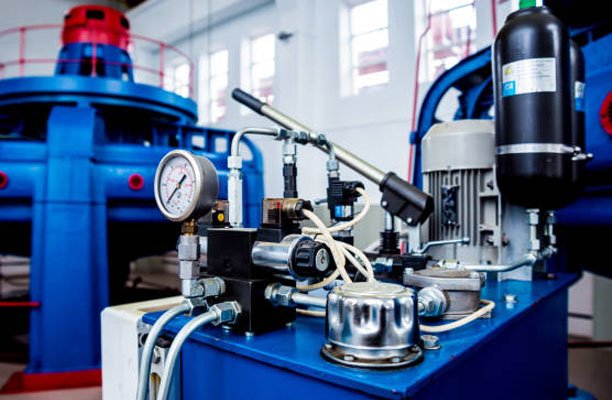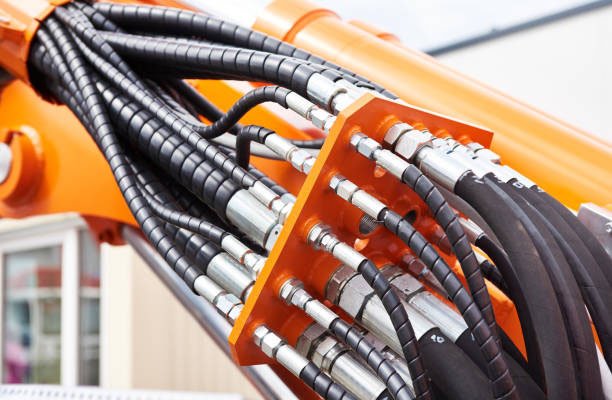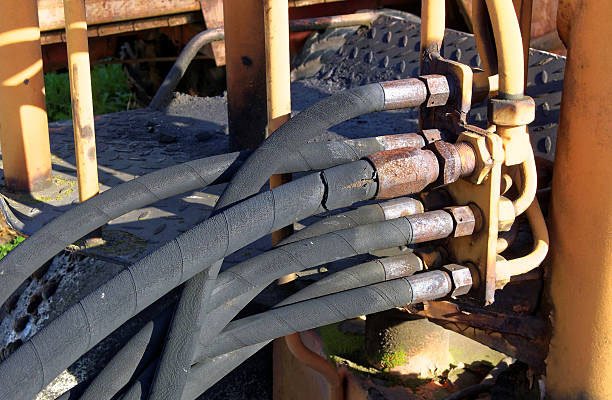Valves play a crucial role in controlling the flow of fluids within a system. Whether in industrial, residential, or commercial settings, selecting the right type of valve can significantly impact system performance, cost-efficiency, and safety. In this article, we will compare two of the most commonly used valves in fluid control: the Globe Valve and the Ball Valve. Understanding their differences, advantages, and applications helps you make an informed decision on the best valve for your specific needs.
What Are Globe Valves?
A Globe Valve is a type of valve used for regulating flow in a pipeline. Its design features a spherical body with an internal baffle that creates a flow path, which helps control the flow of fluids more precisely. The primary function of a globe valve is throttling—adjusting the flow rate of fluids within a system. This makes it ideal for applications requiring fine control over fluid flow.
Systems that require continuous fluid control or regulation typically use globe valves. Their ability to provide throttling control, combined with their robust design, makes them popular in various industries, including chemical processing, HVAC systems, water treatment plants, and steam systems.
Types of Globe Valves
Standard Globe Valve
The standard globe valve is the most common type, featuring a traditional design with a stem that moves a disc into a seat to regulate flow. It is widely used for general-purpose applications requiring moderate pressure handling and flow control.
Angle Globe Valve
Angle globe valves are designed with the inlet and outlet ports at a 90-degree angle. This design reduces flow resistance and pressure drop compared to standard globe valves, making them ideal for applications that require higher flow rates.
Y-Pattern Globe Valve
Y-pattern globe valves feature a Y-shaped body that minimizes flow resistance, reducing the pressure drop. Systems that handle high-temperature and high-pressure fluids, where flow regulation is critical, commonly use this type.
Double-Globe Valve
A double-globe valve features two valve bodies in one unit, allowing for enhanced control over flow regulation. This type is suitable for applications requiring dual flow paths and can be used to balance flow in multi-stream systems.
What Are Ball Valves?

Ball valves are another essential type of valve used for controlling the flow of fluids. As the name suggests, they operate by rotating a ball with a hole in the center to either allow or stop the flow of fluid. Rotating the ball 90 degrees fully opens or closes the valve, providing quick and reliable shutoff. Ball valves primarily control on/off functions rather than throttling or regulating flow.
Ball valves offer durability, tight sealing, and ease of operation. Industries such as water treatment, oil and gas, petrochemicals, and general industrial applications use them where quick shut-off is essential.
Types of Ball Valves
Two-Piece Ball Valve
A two-piece ball valve consists of two body parts and is commonly used for general-purpose applications. These valves are relatively easy to maintain and repair, making them ideal for low to medium-pressure systems.
Three-Piece Ball Valve
Three-piece ball valves feature a modular design, with the body split into three sections. This allows for easier maintenance and cleaning, making them ideal for applications that require frequent valve servicing, such as in food processing and pharmaceutical industries.
Full-Bore Ball Valve
Full-bore ball valves have a ball that is the same diameter as the pipe. This design allows for minimal flow resistance, making them ideal for high-flow applications where flow capacity is crucial, such as in water and gas pipelines.
V-Ball Valve
V-ball valves have a V-shaped ball that offers precise control over flow. These valves are used when you need to regulate flow, such as in chemical and water treatment applications. They offer better throttling capabilities compared to standard ball valves.
Floating Ball Valve
Floating ball valves feature an unfixed ball that “floats” within the valve body. They are typically used in low-pressure systems, where the floating ball creates a tight seal with the seat to prevent leaks.
Globe Valve vs. Ball Valve: Key Differences
While both globe valves and ball valves are designed to control fluid flow, they are engineered for different functions and applications. Below are the key differences that set these two types of valves apart:
Design and Construction
The most noticeable difference between a globe valve and a ball valve lies in their design. Globe valves have a spherical body with an internal baffle and stem that moves a disc to regulate the flow of fluid. Ball valves, on the other hand, consist of a hollow, perforated ball that rotates to open or close the flow path.
The globe valve’s design makes it better suited for regulating flow and throttling applications, while the ball valve’s design allows for a quick, full shut-off or open position with minimal effort.
Operation Mechanism
Globe valves are primarily used for throttling, meaning they are excellent for controlling the flow rate of fluids. When the valve’s stem moves, it alters the position of the disc, adjusting the flow as required. This type of valve provides precise control, making it ideal for applications where accurate flow regulation is necessary.
Ball valves, on the other hand, are designed for on/off functionality. The ball inside the valve rotates 90 degrees to either allow or stop the flow. Unlike globe valves, ball valves are not suitable for throttling since the flow is either completely open or fully closed.
Maintenance and Repair
Ball valves tend to have fewer moving parts, which makes them generally easier to maintain and repair than globe valves. Globe valves, due to their more intricate design, require regular maintenance to ensure the stem and seat remain functional for precise flow control.
Performance Comparison: Globe Valve vs. Ball Valve
When choosing between a globe valve and a ball valve, performance characteristics such as flow control, pressure handling, and response time are essential considerations. Let’s dive into a comparison of the performance features of both valve types:
Flow Control Efficiency
Globe valves excel in regulating the flow of fluids because of their ability to provide fine-tuned throttling. This makes them ideal for systems that require variable flow rates, such as steam regulation or chemical processing plants.
Ball valves, while capable of providing full flow or full closure, are not suitable for precise flow control. They are best for applications that require a simple on/off control, such as in water pipelines or gas systems.
Pressure Handling and Throttling Capabilities
Globe valves handle pressure drops better because they can adjust the flow rate, making them suitable for systems that require throttling. Designed to withstand moderate to high pressures, they can be fine-tuned for various operating conditions.
Ball valves, due to their simple open/close mechanism, generally have less ability to control pressure under varying flow conditions. They are typically used where pressure changes are minimal or where maintaining consistent pressure isn’t a priority.
Suitability for Different Fluids
Both valve types are used in various industries, but their performance depends on the type of fluid. Globe valves excel at regulating the flow of viscous fluids and gases that require throttling, while ball valves perform best in systems handling clean, low-viscosity fluids.
Durability: Which Valve Lasts Longer?
The durability of a valve depends on several factors, including the materials used in construction, the environment in which the valve operates, and the level of maintenance. Let’s take a look at how globe and ball valves compare in terms of lifespan and longevity:
Material Considerations
Globe valves are typically constructed from metals like stainless steel or brass, which provide good durability against corrosion and wear. However, the moving parts in globe valves (such as the stem, disc, and seat) can experience wear over time due to constant friction during operation.
Ball valves, being simpler in design, also feature durable materials like stainless steel, brass, and carbon steel. Their fewer moving parts contribute to their longevity, especially in systems that do not require frequent adjustments to the flow rate.
Wear and Tear
Globe valves, due to their design and frequent operation for throttling, can experience wear and tear on the internal components. The disc and seat, which are in constant motion, are more prone to degradation over time, especially if the valve is not properly maintained.
Ball valves, with their fewer moving parts, tend to experience less wear and tear. Ball valves generally have a longer lifespan due to their ability to function with minimal friction, especially in high-flow applications where frequent operation is not required.
Maintenance Requirements
Regular maintenance is crucial for both valve types, but it’s especially important for globe valves, which require frequent checks to ensure the stem, seat, and disc are in good condition. Ball valves, on the other hand, are low-maintenance valves with simple designs that can often go without repair for long periods.
Flow Characteristics: Globe Valve vs Ball Valve
When choosing between a globe valve and a ball valve, understanding their flow characteristics is crucial for optimizing system performance. Both valves affect the flow of fluids in different ways due to their design, making them more or less suitable for specific applications. Below is a comparison of their flow characteristics:
Globe Valve Flow Characteristics
Globe valves are designed to offer precise control over the flow of fluids. As the stem moves, the disc is raised or lowered, allowing the valve to regulate the flow rate gradually. This ability to throttle the flow makes the globe valve ideal for applications that require fine control, such as in chemical dosing, pressure regulation, or steam systems.
However, the design of a globe valve creates resistance to the flow. As the fluid passes through the valve body and around the internal baffle, it experiences pressure loss. This pressure drop is a trade-off for the ability to finely control the flow. For high-flow systems, the resistance created by a globe valve can be a disadvantage, making ball valves a better choice in such cases.
Ball Valve Flow Characteristics
Ball valves are designed for full-flow or full-close operation. When the ball rotates 90 degrees, the valve either fully opens or closes, allowing for a complete flow or a complete shutdown. Ball valves last longer because they operate with minimal friction, making them ideal for high-flow applications where users don’t need frequent operation.
Ball valves provide a straight-through path for fluid to pass, resulting in little to no pressure drop compared to globe valves. This makes ball valves highly efficient for systems requiring high-flow rates or where pressure loss needs to be minimized. However, they are not suitable for throttling and precise flow control due to their limited functionality in between the open and closed positions.
Cost Comparison: Globe Valve vs Ball Valve
Cost is often a major factor when selecting valves for an application. While both globe and ball valves have their advantages, their prices can vary significantly depending on factors such as design complexity, material, and manufacturing process. Here’s a comparison of the costs associated with each valve type:
Globe Valve Cost
Globe valves are generally more expensive than ball valves due to their complex design. The internal components such as the stem, seat, and disc require precise machining and often involve more labor-intensive manufacturing processes. Additionally, globe valves are typically used in applications where fine control over flow is essential, which adds to their cost.
However, the cost of a globe valve can vary depending on the material, size, and application. For example, stainless steel globe valves are more expensive than brass or cast-iron models. In high-performance applications, such as in power plants or chemical plants, the cost of a globe valve may be justified due to its ability to precisely regulate flow and handle high pressures.
Ball Valve Cost
Ball valves are typically more affordable than globe valves because of their simpler design. With fewer moving parts and less machining required for production, ball valves tend to be less expensive. The cost of a ball valve can also vary depending on the material used, with stainless steel ball valves being more expensive than plastic or brass ones.
While ball valves are generally cost-effective, their suitability for applications that require precise flow control is limited. As a result, in some situations, a more expensive globe valve may be the better choice if flow regulation is critical.
Cost Efficiency Over Time
Although globe valves may have a higher upfront cost, they could provide long-term cost efficiency in applications where flow control is necessary. The ability to regulate fluid flow with high precision can prevent wastage and reduce energy consumption in systems such as heating, ventilation, and air conditioning (HVAC) or water treatment plants.
Ball valves, being easier to maintain and with fewer parts subject to wear and tear, may offer better cost-efficiency in systems where maintenance and repairs are a concern. Their simple on/off mechanism means fewer parts can break down, leading to reduced maintenance costs over time.
Energy Efficiency: Globe Valve vs Ball Valve
Energy efficiency is another critical factor to consider when selecting between a globe valve and a ball valve. Both valves impact system energy consumption in different ways due to their flow characteristics and design. Let’s examine how each valve performs in terms of energy efficiency:
Globe Valve Energy Efficiency
While globe valves are excellent for flow regulation, they tend to create more resistance to the flow due to their design. This resistance results in a pressure drop, which requires additional energy to maintain the desired flow rate. In systems that require throttling, the pressure drop increases energy consumption, especially if the fluid needs to be pumped at higher pressures.
However, in systems where precise control is necessary, the benefits of using a globe valve outweigh the potential energy loss. For example, in heating or cooling systems, where maintaining precise flow rates is critical for energy efficiency, the ability of a globe valve to regulate flow can result in optimized system performance, even if there’s a slight increase in energy consumption.
Ball Valve Energy Efficiency
Ball valves, with their straight-through design, result in minimal resistance to the flow when fully open. As a result, they are more energy-efficient than globe valves in high-flow applications. A reduced pressure drop means the system requires less energy to move the fluid, making ball valves ideal for applications where energy efficiency is a top priority.
For instance, in water distribution systems or gas pipelines, where maintaining high flow rates with minimal energy consumption is critical, ball valves are the more energy-efficient choice. However, since ball valves cannot throttle flow, they are less effective in applications that require adjustable flow rates.
Applications: Globe Valve vs Ball Valve
Both globe valves and ball valves have a wide range of applications across various industries. However, due to their unique characteristics, each valve type excels in specific use cases. Let’s explore the common applications for both valves:
Applications of Globe Valves
Globe valves are highly favored in applications where precise flow control or throttling is needed. Their ability to finely regulate the flow of liquids and gases makes them an essential choice in the following industries:
- Water Treatment Plants: Globe valves are used to regulate the flow of water and chemicals, ensuring proper treatment processes.
- Power Generation: In steam and water lines, globe valves control flow to turbines and heat exchangers, maintaining energy efficiency.
- Oil and Gas: Globe valves are commonly found in refineries and pipelines, where pressure and flow regulation is critical for safety and efficiency.
- Chemical Processing: The ability to regulate corrosive chemicals and gases in reactors and pipelines makes globe valves an important part of chemical production systems.
- HVAC Systems: Globe valves regulate hot and cold water flow to optimize temperature control in heating, ventilation, and air conditioning systems.
Applications of Ball Valves
Ball valves, with their simple design and complete shut-off capability, are ideal for applications requiring on/off control without throttling. Some common applications include:
- Water Distribution: Control the flow of water in large municipal or industrial systems, where quick shut-off is necessary.
- Gas Pipelines: Ensure swift halting of gas flow in natural gas distribution systems during emergencies.
- Oil & Petrochemical Industries: Provide secure shut-off in pipelines and storage tanks to prevent leaks.
- HVAC: Offer on/off control of air, water, or steam in HVAC systems, enabling fast isolation of sections.
- Food & Beverage Industry: Facilitate clean shut-off in food production, ensuring no contamination risks.
Advantages and Disadvantages: Globe Valve vs Ball Valve
Each valve type comes with its own set of advantages and disadvantages, depending on the specific requirements of the application. Let’s compare the pros and cons of globe valves and ball valves:
Advantages of Globe Valves
- Precise Flow Control: Globe valves are ideal for throttling and fine flow control, which makes them suitable for applications requiring accurate fluid regulation.
- Better Pressure Regulation: Globe valves are capable of handling pressure fluctuations in systems, which makes them perfect for systems with variable flow rates.
- Wide Range of Applications: Their versatility in regulating fluids across a wide range of temperatures and pressures makes them suitable for a variety of industries.
Disadvantages of Globe Valves
- Higher Cost: Due to their complex design and additional parts, globe valves tend to be more expensive than ball valves.
- Higher Flow Resistance: Globe valves create more resistance to flow, leading to potential energy losses and pressure drops in high-flow systems.
- Frequent Maintenance: Globe valves require regular maintenance to ensure their moving parts remain operational, leading to higher long-term maintenance costs.
Advantages of Ball Valves
- Low Maintenance: With fewer moving parts, ball valves are easier to maintain and have a longer lifespan compared to globe valves.
- Minimal Flow Resistance: Ball valves have minimal flow resistance when open, making them highly efficient for high-flow applications.
- Cost-Effective: Ball valves are typically less expensive than globe valves, making them an ideal option for applications with budget constraints.
- Fast and Reliable Shut-off: Ball valves provide quick and secure shut-off, ensuring that flow can be easily halted when necessary.
Disadvantages of Ball Valves
- Limited Flow Control: Ball valves are not suitable for throttling and precise flow control, limiting their application in systems requiring adjustable flow rates.
- Less Effective in High-Pressure Regulation: Ball valves are less capable of handling variable pressures compared to globe valves, making them unsuitable for systems with fluctuating pressure demands.
- Wear and Tear on Seals: Ball valves are subject to wear on the seals over time, which can lead to leaks if not properly maintained.
Conclusion
In conclusion, both globe valves and ball valves offer distinct advantages depending on the specific needs of your system. Globe valves are ideal for applications that require precise flow control and pressure regulation. They excel in systems where throttling is essential, such as in chemical processing, HVAC, and power generation.
In contrast, ball valves are best for applications requiring quick shut-off, such as gas pipelines, water distribution systems, and HVAC. They are more cost-effective, require less maintenance, and offer higher flow efficiency, making them a popular choice for industries that prioritize operational simplicity and minimal resistance to flow.
Ultimately, the choice between a globe valve and a ball valve depends on your specific application, including flow control needs, pressure requirements, maintenance concerns, and budget. By understanding the unique benefits and limitations of each valve type, you can make a more informed decision to optimize system performance and efficiency.
FAQs
- What is the primary difference between a globe valve and a ball valve?
The primary difference is that globe valves regulate flow (throttling), while ball valves are designed for quick on/off control. - Can a ball valve be used for throttling?
No, ball valves are not suitable for throttling as they offer only two positions: fully open or fully closed. - Which valve is better for high-flow applications?
Ball valves are better suited for high-flow applications because they provide minimal resistance to flow. - Are globe valves more expensive than ball valves?
Yes, globe valves tend to be more expensive due to their complex design and more labor-intensive manufacturing process. - What are the maintenance requirements for globe and ball valves?
Globe valves require more frequent maintenance due to their moving parts, whereas ball valves require less maintenance due to their simpler design.





